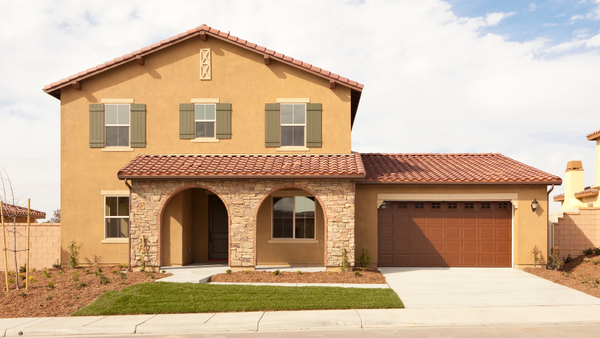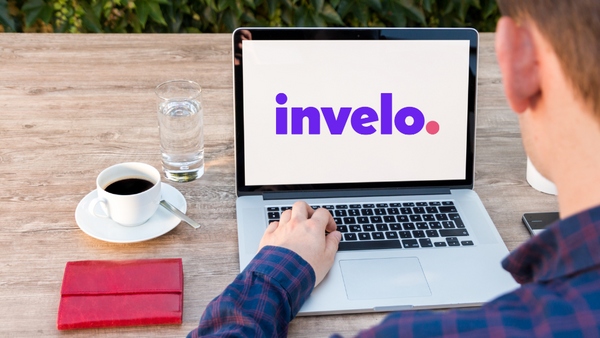An investment property refers to a piece of real estate purchased to generate a profit through rental income, eventual sales, etc. It can be a long-term commitment, such as rent, or a short-term investment, such as rehabbing and flipping.
Such properties are usually those that are not used as primary dwellings. Instead, they are used to generate returns in dividends, interest, rentals, or royalties.
Different Types of Investment Properties
Generally, investment properties can be divided into 3 categories:
- Commercial: Some investors, particularly businesses, buy commercial properties that are used exclusively for business. These properties require more maintenance and renovations, but the higher return from leasing is what makes them so lucrative. Commercial properties could be commercially-owned residential complexes or retail storefronts.
- Residential: The most common approach for property investors to supplement their income is through rental homes. Investors can earn monthly rents by purchasing a residential property and renting it out. Single-family homes, condominiums, and apartments are examples of residential properties.
- Mixed-Use: A mixed-use property can be used for both business and residential purposes at the same time. For example, a building may feature a retail outlet on the first floor, such as a convenience store or restaurant, while the upper floors house residential units.
Investment Property - Pros and Cons
An investment property can play a significant role in supplementing your income. But as with any other investment, there are several pros and cons you need to know.
Pros
- Fewer Risks: Compared to other investment options, investment properties have fewer risks, especially in the long run. Home prices rise every year in most healthy real estate markets. Therefore, the longer you own a property, the better the profits and the lower the risks.
- Diversified Income Source: You can buy and sell, flip, or rent your property when it comes to property investment. Each of these investment alternatives has the potential to pay off handsomely. Rental income, equity, and capital gains are possible, with rent and home prices increasing practically every year. Furthermore, you have complete control over the type of investment property you purchase and how you finance it.
- Inflation Resistance: You can use investment properties as a hedge against inflation. When interest rates are high, property values and rents tend to follow suit. On the one hand, increased living costs will benefit you. On the other hand, inflation might reduce the value of mortgage payments.
- Tax Benefits: Property owners with tenants can deduct numerous expenses associated with rental income, such as depreciation, home repairs, or improvements. In addition, mortgage interest and property manager costs are also deductible expenses.
Cons
- Tenant Risk: Tenants may be the biggest downside to investment properties. Part of the reason rental income is never guaranteed comes from destructive, non-paying, or wasteful tenants. By constantly screening new clients, outlining the regulations in the standard lease form, and collecting security deposits, you can reduce the danger of getting problematic tenants.
- Neighborhood Decline: Your investment property will thrive in a neighborhood with other well-kept homes and amenities. However, areas can fall into disrepair, and your investment may suffer as a result. You can reduce this risk by being selective about the property location, paying attention to local politics, and researching.
- Property Management: Every property needs to be taken good care of to maintain its value. There will also be other chores for the investor, such as tenant screening, rent collection, and insurance processing. Many landlords instead choose to employ a property management company to look after their investment to handle such burdens.
- Lack of Liquidity: Real estate is a non-liquid investment. Even in the hottest market, completing a deal can take several months. Because of its unpredictability, investment properties may not be the ideal solution if you're hoping for short-term gains.
- Taxes and Insurance Costs: Your mortgage interest and principal may be fixed, but there's no guarantee that taxes won't climb faster than your rents. Insurance rates may also increase due to different circumstances.
PRO TIP: Renting investment properties requires some up-front cash. If you're low on funds, consider wholesale real estate investing. Read our step-by-step guide for wholesaling real estate.
Things to Consider Before Buying an Investment Property
If you decide to go forward with an investment property after considering all of the advantages and disadvantages, here are a few things you should consider:
- Housing Market Trends: Understanding market trends is essential for selecting a property that will rise in value over time. Keep an eye on an area's housing market indicators and rental patterns to see which locations will become the best places to invest in real estate. You can pinpoint the most significant investment locations by tracking these patterns over time and comparing previous property prices and taxes.
- Property Taxes: Local governments set their property tax rates. So other than the value of your property, the amount of taxes you pay may also be calculated based on its location. You may talk to local real estate agents or mortgage lenders to determine the property taxes that particular home will be charged.
- Partnerships: A property investment partner provides benefits such as pooled funds, shared maintenance costs, and shared obligations. Buying with a partner, on the other hand, divides your potential gains in half and places the burden of shared legal liability on your shoulders. Furthermore, if your partner does something wrong, you would still be held equally accountable as one of the paper owners. As a result, it is crucial to select a reliable, accountable, and proactive partner for investment.
- Loans and Mortgage: While borrowers have a variety of financing alternatives for their primary house loans, financing for an investment property can be a little challenging. You don’t get mortgage insurance for investment homes. So, borrowers must have good credit scores and meet other criteria to qualify for bank financing. Some lenders also demand the borrower to have sufficient savings to cover at least six months' worth of investment property expenses.
- Property Management Companies: Property management companies take care of repairs, conduct routine inspections, and even collect rent on your behalf. For a price, some property managers also provide tenant placement services and eviction processing. In exchange, they will charge a percentage of your monthly rent. If you live away from your home or don't want to take on the responsibility, hiring a property management company could be a good option.
Best Property Investment Strategies
There are only two property investment strategies at their most basic level. You can buy a house and rent it out or sell it for a profit. When it comes to investment property, however, there are a variety of tactics based on the type of property or renter:
Buy-to-Sell
Buying a house or apartment, upgrading it rapidly, and then selling it for a profit is known as flipping a property. The amount of fast money that can be made is the main draw of Buy-to-Sell.
Instead of the extended timeframe of a Buy-to-Let plan, you can buy and sell in a matter of months. When looking at Buy-to-Sell properties, location and budget are the most critical considerations.
You must ensure the right price, location and keep any renovations or upkeep costs within budget.
Off-Plan Property
Off-Plan properties are newly built developments that are not ready for tenants and bought before they’re completed. This is a popular investment method because of the potential for capital growth between purchase and completion and buying at a lower initial cost than a completed property.
But investing in Off-Plan property depends entirely on the market, particularly if you’re hoping for capital growth during the build period.

Single Let Property
A single let property is one where you rent out a single room or flat to a single tenant. Because they're reasonably easy to get up and running, these properties are one of the most typical Buy-to-Let assets.
Single-let properties are popular since they are one of the most straightforward methods to enter the investment market.
HMO
A house in multiple occupations (HMO) is a rental property in which each room is rented to a different tenant. HMOs are popular because they provide more rental income.
Rooms in a larger home can be transformed into bedrooms, allowing for more renters and thus more money. Unfortunately, having more tenants means more significant wear and tear on the property, as well as more time spent managing it.
Student Property
A student property investment is essentially a residence with many student tenants. This is quite similar to a single-let or HMO in Buy-to-Let property investment tactics, but it concentrates on an entirely different market.
Many investors prefer to invest in student housing because it provides a dependable and steady rental revenue stream.
Tips for Investing in Investment Property
All things considered, if you're seeking to buy an investment property, here are a few pointers you should consider to increase your profit:
Choose the Right Market
It's critical to discover markets on a big scale, such as a specific city with significant demand, as well as markets on a smaller scale, such as zip codes or neighborhoods, where your rental property type has potential.
When looking for a bargain property, keep in mind that regions with low-value real estate are also priced accordingly. If you discover a low-cost real estate market, do your homework and determine what variables reduce purchasing pricing.
In an ideal world, you'd buy a rental property in a desirable location with a balanced supply and demand.
Set Money Aside
Over time, rental homes will require repairs and renovations. It's only natural for things to break or require upgrading.
Set aside money in a maintenance reserve each month for these upgrades. It's a good idea to set aside at least 10% of your monthly rental income for repairs. Depending on the age and condition of the property, you may wish to set aside extra.
Consider Cash Flow
The primary goal of investing in rental real estate is to generate cash flow. While you may be tempted to buy investment properties for the tax benefits, the possibility to increase value, or future appreciation, cash flow should always come first.
Some investors will only purchase a rental property if it generates a specified rate of return (ROI). Others impose a per-unit minimum net rental income.
Determine your cash-flow criteria depending on your financial objectives and risk tolerance. Look for investment alternatives that fit your cash flow needs.
PRO TIP: Top real estate investors use a CRM to find prospects, market to leads and track deals. Try Invelo for free to get started.
Choose the Right Strategy
Rental income can be obtained through a variety of property investment strategies. Besides single-family rentals, condos, duplexes, or townhouses, commercial rental assets such as self-storage facilities, retail space, and office buildings are also available.
Renting is the primary source of income for all of these property types. The management approach for each, however, differs significantly.
So, before you start investing in rental properties, read about the many types of rentals and decide which method of real estate investing appeals to you the most.
Avoid Severely Distressed Properties
While houses in need of more repairs may come cheap, the cost of rehabbing might eat into your profits in the long run.
Don’t spend too much on renovation. Instead, look for an undervalued home that needs minimal repairs.
Prepare for Unprecedented Costs
Besides maintenance and upkeep, always factor in emergencies. These include natural disasters, broken pipes, water damage, etc.
To be prepared for such scenarios, you should ideally save 20-30% of your rental income. This way, you’ll have a fund to pay for repairs on schedule.






